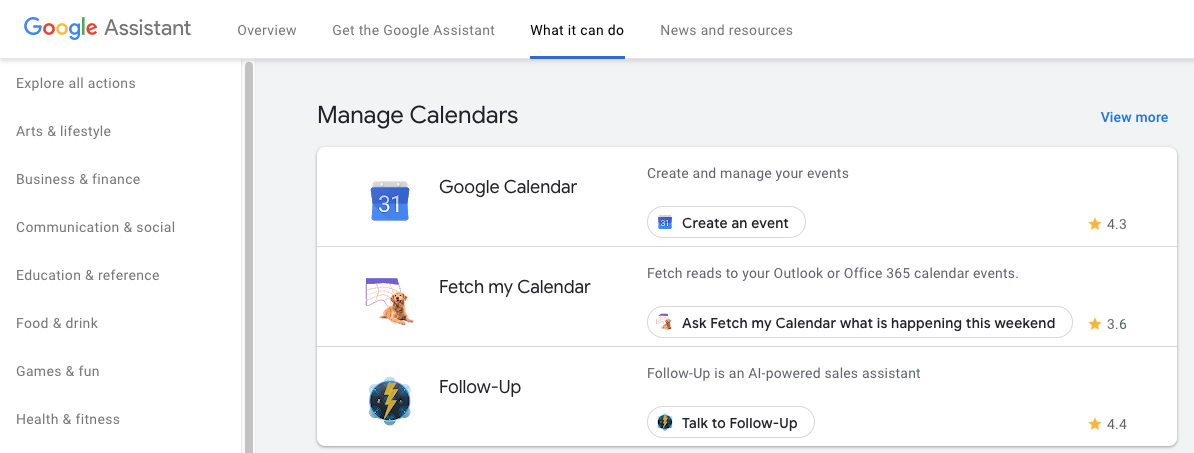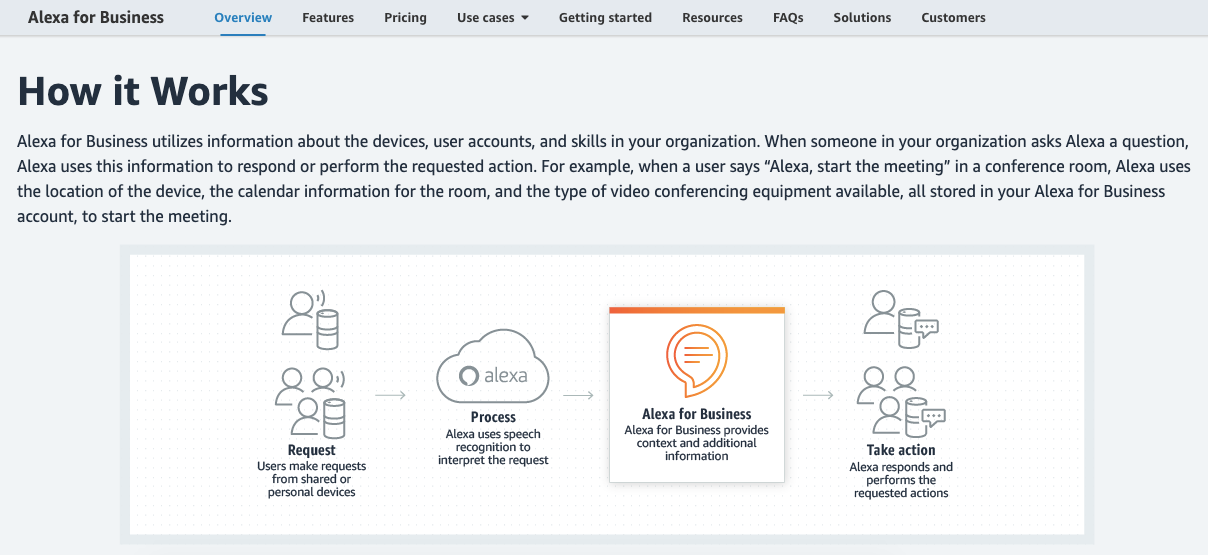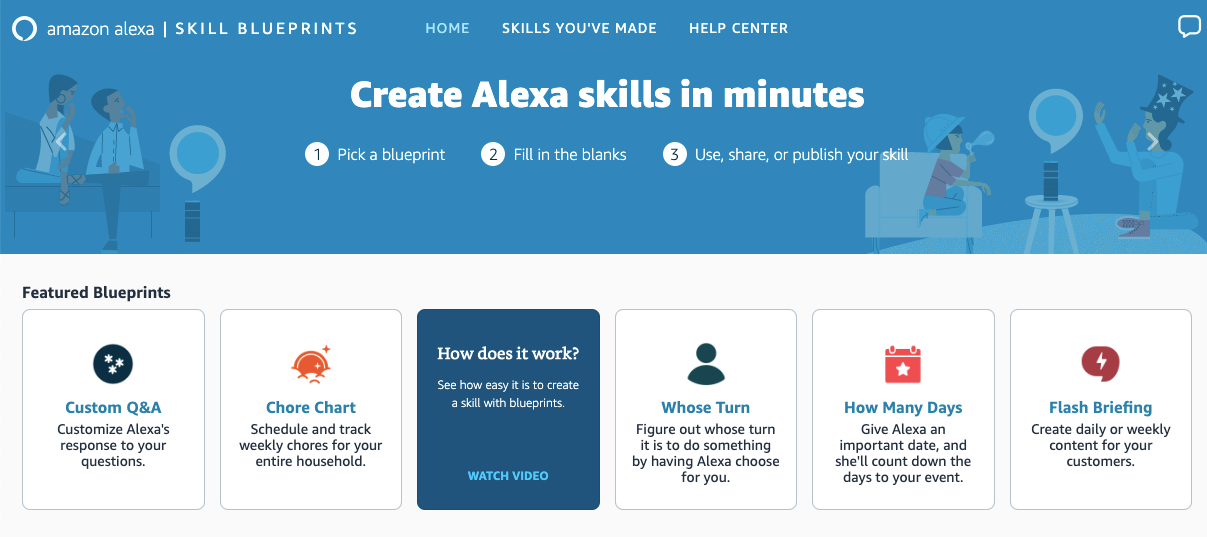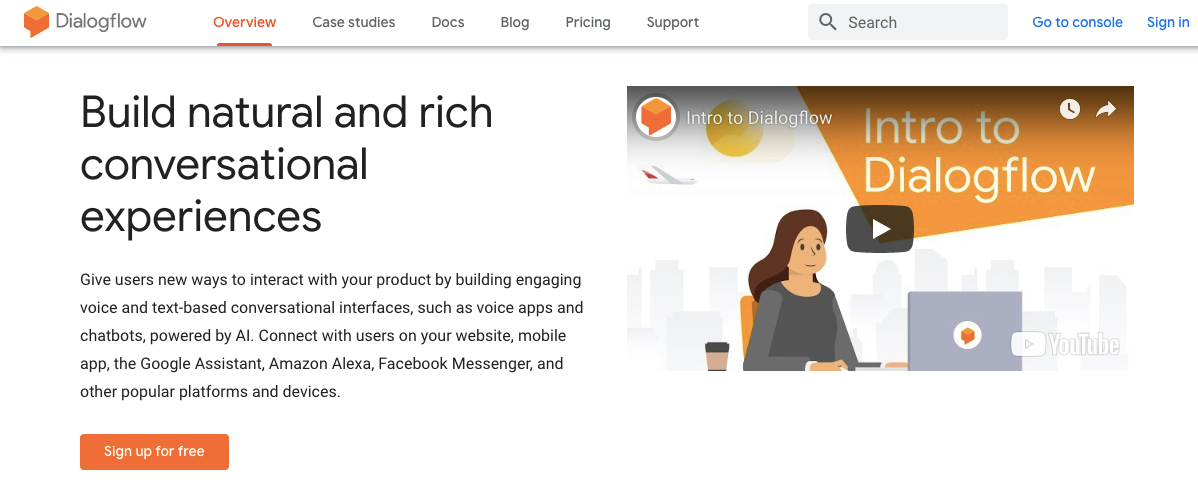I mostly use Google Assistant at home to settle debates with my husband and daughter: "Hey Google, what year was Wall-E released?" (2008. I was right.) But I have one friend who uses Alexa exclusively to play music and another who's connected seemingly every device in his house to Alexa to turn things on and off without getting off the couch.
But voice assistants aren't just for fun and convenience at home anymore. Amazon and Google are both turning their attention to how voice assistants can make people more productive at work. And even at the early stages of this new focus, the potential of voice assistants to deliver convenience and drive efficiency in the workplace looks promising.
Try Google Assistant's integration with Zapier (currently in Beta): use your voice to make things happen like posting a message in Slack or creating a lead in your CRM. Start here for some ideas on how to use Zaps with your voice assistant.
How Voice Assistants Simplify Day-to-Day Tasks at Work

While my friends and I do a poor job of using our voice assistants at home to do anything constructive (unless you consider asking Google to sing a little ditty constructive), there are tons of ways to use Google Assistant and Alexa to remember things, find information, and boost your productivity. And you can get those same benefits by using voice assistants at work.
Create meetings, reminders, and to-do items: Have your voice assistant add meetings to your calendar, invite others to your meetings, create one-time and recurring reminders, or add items to your to-do list (examples: Google Assistant, Alexa).
Get a quick overview of your day: While you drink your morning coffee, you can ask your voice assistant to recite an overview of your day to you, including the details—time, location, and participants—of your first meeting (examples: Google Assistant, Alexa).
Control lights, thermostats, and door locks: Want to turn on/off the lights, adjust the thermostat, or lock the doors without leaving your desk? Your voice assistant can control connected devices at work just like it can at home (examples: Google Assistant, Alexa).
Send money: Send payments to vendors, contractors, or freelancers quickly through payment processing tools like Google Pay and PayPal (examples: Google Assistant, Alexa).
Make travel arrangements: Find flights and hotels for upcoming business trips, check the status of incoming or outgoing flights, get directions, check the traffic, or request a Lyft/Uber (examples: Google Assistant, Alexa).
Make phone calls/send texts: You can download the Google Assistant (Android, iOS) or Alexa (Android, iOS) apps to your phone to have your preferred voice assistant make calls, answer calls, send texts, or read texts you've received when you're commuting.
Perform calculations: If you're in a device-free meeting and need to perform a quick—but complex—calculation, you can ask your voice assistant to solve an equation for you (examples: Google Assistant, Alexa).
Take notes during meetings: Ask your voice assistant to document takeaways during meetings, record full meetings, or have your voice assistant read you a summary of a recent meeting (examples: Google Assistant, Alexa).
Order office supplies: Quickly purchase office supplies or add items to your shopping cart using just your voice (instructions: Google Assistant, Alexa).
Follow these links to explore the full list of Google Assistant Actions and Alexa Skills.
More Exciting Use Cases for Voice Assistants at Work

Amazon is best known for its namesake online store, but that's hardly all the company has its hands in. Amazon also owns companies like Whole Foods, Twitch, Zappos, and Audible, and it powers a good portion of the internet with its AWS cloud computing service. Amazon wants to be everywhere. And it kind of is.
So it should come as no surprise that Amazon is working hard to get Alexa in offices all around the world with Alexa for Business, an Alexa service designed specifically for use in the workplace. Alexa for Business lets companies and their employees use voice commands to do things like search for and book open conference rooms, turn on equipment, and start/end conference calls.
But every business needs its own nichey commands, and that's where Alexa shines. Your company's developers can build customizable voice assistant interactions that only employees can use and access.
Examples of custom Alexa skills
With custom Alexa skills, companies' developers can build voice-enabled applications that do all kinds of things. Here are some examples of skills that companies have already built to help boost efficiency in the workplace:
Answer FAQs: Valence has a custom skill called Valance Bot that answers employee questions and handles requests related to the company.
Retrieve data: Core Digital Media built a custom skill that connects to its business intelligence platform so employees can ask Alexa data-related questions about the business and get immediate answers.
Locate assets: Express Dedicated is a logistics company that uses a custom Alexa skill to quickly identify where their trucks are located. This makes it easier to notify drivers if they're in violation of hours of service regulations.
Monitor IT infrastructure: Capital One has a private skill that monitors the performance of its AWS infrastructure, allowing employees to check system statuses using voice commands and request more information when security events occur.
Custom skills are private: Developers can create and publish them so that they're only accessible to employees on company voice assistant devices. (Though you may need to adjust your privacy settings to ensure Amazon employees can't listen to your recordings. Not that they'd ever do that.) Developers looking to create custom, private Alexa skills can get started with the Alexa Skills Kit.
Alexa Skill Blueprints and pre-built skills

Your business may not have the resources to build custom skills from scratch. You still have options: Skill Blueprints and pre-built skills.
Option 1: Skill Blueprints provide companies with a framework for building custom, private skills without needing tons of technical knowledge.
There are currently two business Blueprints: a Q&A skill and an onboarding skill. Companies can use these blueprints to let employees ask Alexa common onboarding and company-specific questions and get answers.
For example, how many times have you told people when open enrollment begins, emailed someone your pay schedule, or answered a Slack message asking about vacation days? Instead of answering these same questions over and over, you could create a Q&A skill using Skill Blueprints and set up an Alexa device in your break room or another common area to help new employees get answers to questions like "how do I enroll for health insurance?"
Option 2: Alexa for Business pre-built skills are available from software providers like Salesforce, ServiceNow, Concur, Obindo, Splunk, Cisco, Zoom, and more, letting you create voice-activated applications for updating customer records, creating IT support tickets, accessing company data, and launching conference calls.
Administrators can easily assign all Alexa devices to their business accounts using a Device Setup Tool. They can assign devices to a room, get usage metrics, and invite users. Remote companies can also let employees enroll their personal Alexa devices to business accounts so they can access custom skills outside of the office.
Google Assistant for the Workplace

While Amazon is pushing Alexa for Business as its solution for using voice assistants to boost productivity at work, Google is currently more focused on helping businesses create actions for customers.
There are lots of examples of how businesses are creating B2C voice-activated applications on Google's Vertical Solutions page. For example, banks could create actions that allow customers to check their account balances. Podcast producers can create actions that let people find and play their podcasts on Google Assistant. eCommerce stores can enable purchasing through Google Assistant.
But developers can use these same tools to create private actions for their companies as well. Anything you can do with Alexa for Business you can do with Google Assistant, such as creating FAQ applications and integrating with business applications like Skype, Slack, and Hangouts Chat.
To get started with Google Assistant for the workplace, check out the documentation for Actions on Google or look into Dialogflow—Google's tool for creating conversational interfaces.
The Future of Voice Assistants in the Workplace
Voice assistant technology, particularly in the workplace, is still in its infancy. But as people start using voice assistants more and more at home, they'll come to expect the same conveniences at work—minus the embarrassing questions they ask in the privacy of their own homes. In fact, a recent Gartner report predicts that by 2021, 25% of digital workers will use virtual assistants at work daily, up from less than 2% in 2019.
So it's worth thinking about how you can use voice assistants in the workplace now to get ahead of the adoption curve.





